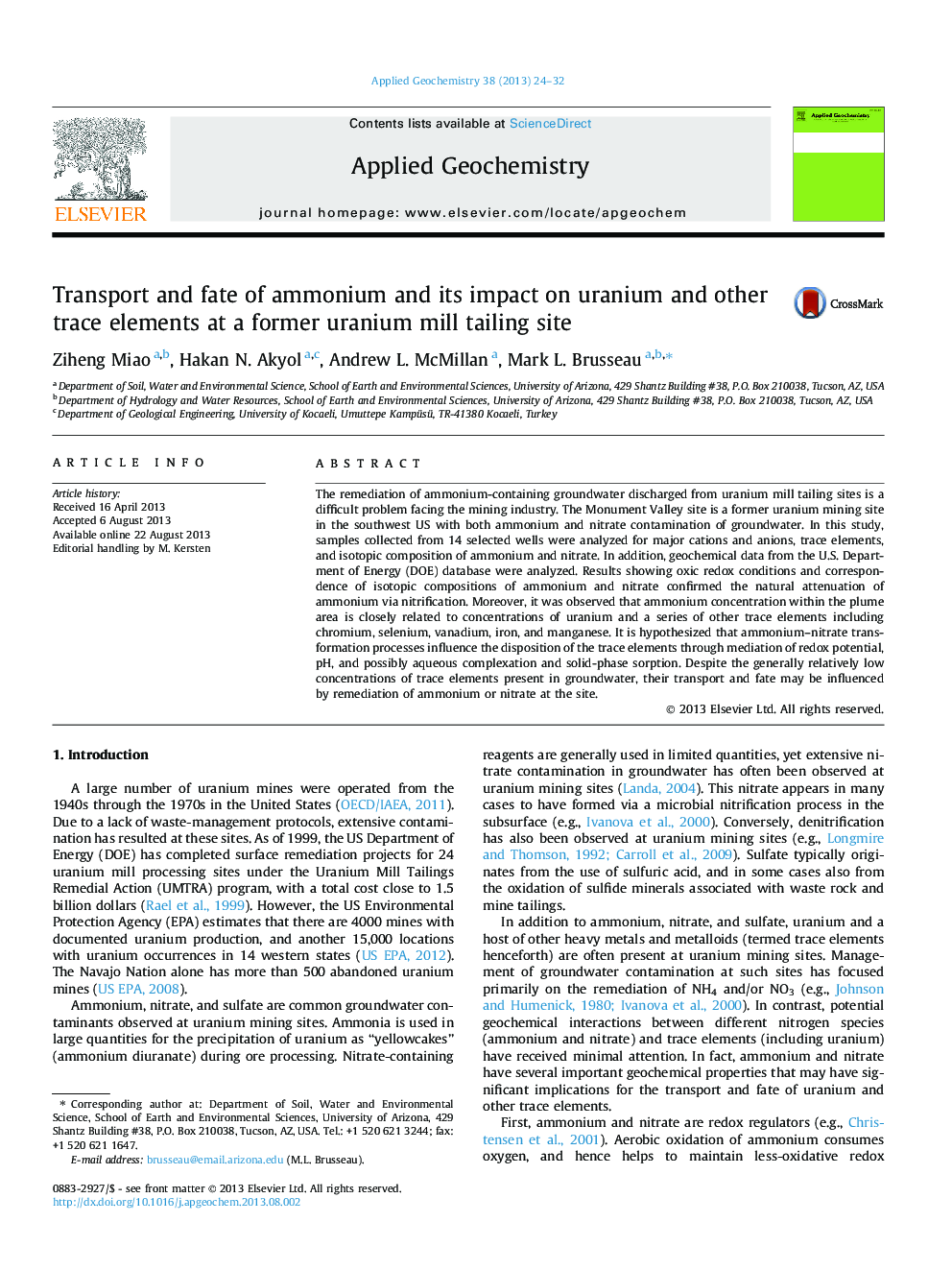| Article ID | Journal | Published Year | Pages | File Type |
|---|---|---|---|---|
| 4435904 | Applied Geochemistry | 2013 | 9 Pages |
•Nitrification of ammonium evidenced by stable isotopes of nitrate at a mining site.•Concentrations of uranium and other trace elements related to ammonium conc.•Observed impact of ammonium on redox, pH, and possibly complexation.•Proposed impact of transformation of NO3 and NH4 on trace elements.
The remediation of ammonium-containing groundwater discharged from uranium mill tailing sites is a difficult problem facing the mining industry. The Monument Valley site is a former uranium mining site in the southwest US with both ammonium and nitrate contamination of groundwater. In this study, samples collected from 14 selected wells were analyzed for major cations and anions, trace elements, and isotopic composition of ammonium and nitrate. In addition, geochemical data from the U.S. Department of Energy (DOE) database were analyzed. Results showing oxic redox conditions and correspondence of isotopic compositions of ammonium and nitrate confirmed the natural attenuation of ammonium via nitrification. Moreover, it was observed that ammonium concentration within the plume area is closely related to concentrations of uranium and a series of other trace elements including chromium, selenium, vanadium, iron, and manganese. It is hypothesized that ammonium–nitrate transformation processes influence the disposition of the trace elements through mediation of redox potential, pH, and possibly aqueous complexation and solid-phase sorption. Despite the generally relatively low concentrations of trace elements present in groundwater, their transport and fate may be influenced by remediation of ammonium or nitrate at the site.
